

Building Communities
REED Fund Helps Support Local Growth Pages 8-9
DERs and the Electrical Grid Pages 12-13



Building Communities
REED Fund Helps Support Local Growth Pages 8-9
DERs and the Electrical Grid Pages 12-13
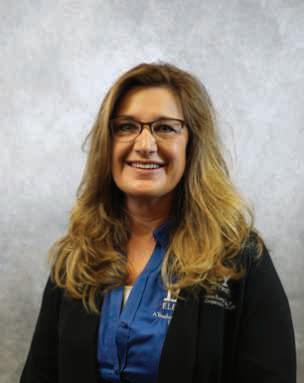
Stephanie Horst horst@byelectric.com
February often brings some of the coldest weather of the year. As our heating systems work harder to keep us warm, it’s not uncommon to see higher energy bills. Several key factors influence electricity costs, but there are also steps you can take to reduce your home’s energy consumption.
When you receive your monthly bill from B-Y Electric, it includes a summary of how much electricity you used during the billing cycle. By logging into your SmartHub account, you can even see daily patterns, such as increased usage on particularly cold days or when hosting guests. However, beyond your household’s consumption, external factors also play a significant role in determining electricity costs.
B-Y Electric purchases electricity from East River Electric, our transmission partner, at wholesale rates and then delivers that power to our members. A significant portion of your electric bill reflects the cost of generating and transmitting electricity. These costs depend heavily on fuel prices, such as natural gas and coal, which fluctuate with supply and demand. While these changes can impact electricity prices, we work with East River Electric and Basin Electric to plan ahead and stabilize costs for our members.
Extreme Weather
While we can’t control the weather, we do monitor patterns and forecasts to prepare for periods of extreme temperatures. During cold snaps or heatwaves, electricity demand often spikes, leading to increased prices.
Infrastructure and Equipment
B-Y Electric members pay a monthly facility charge to cover the costs associated with maintaining and operating the electrical system. This flat fee ensures we can fund essential activities such as repairing power lines, maintaining substations, and replacing aging equipment. Reliable service depends on consistent investments in our local grid.
Energy
Federal energy policies and regulations also influence electricity costs. As the nation shifts towards renewable energy sources and implements stricter standards for traditional fuels like natural gas and coal, electric utilities face higher costs for upgrades and new technologies. These additional expenses are ultimately passed along to consumers.
Looking ahead, U.S. electricity consumption is expected to double by 2050. To ensure reliable service, electric cooperatives, including B-Y Electric, are actively advocating for balanced energy policies that meet the needs of our members.
While many factors affecting electricity prices are beyond your control, you can take steps to reduce energy use at home:
• Thermostat Management: Heating and cooling account for a significant portion of home energy use. Lowering your thermostat to the lowest comfortable setting can lead to meaningful savings. Be sure to service your HVAC system annually and replace filters as needed.
• Shift Energy Use to Off-Peak Times: Perform energyintensive chores during off-peak hours, such as early mornings or late evenings, when electricity demand is lower.
• Seal Air Leaks: Inspect your home for drafts around windows, doors, and other gaps. Sealing these leaks helps your heating and cooling system work more efficiently, reducing energy costs and improving comfort.
We’re Here to Help
B-Y Electric is committed to helping you manage your energy use and save money. Visit www.byelectric.com or contact Aaron Melichar at 605-463-2507 to learn more about our efficiency programs. As your local energy partner, we’re dedicated to providing reliable, affordable power while supporting your efforts to use energy wisely.

(USPS No. 018-973)
Bon Homme Yankton Electric Association, Inc PO Box 158 134 S. Lidice St. Tabor, SD 57063
Office Hours:
Monday through Friday 7:30am - 4:00pm
To pay by phone, call: 1-888-395-5315
Pay by Phone, call: 1-855-941-3507
To report an outage, call: Local call from Tabor, Tyndall, and Yankton: 605-463-2507
To report an outage, call: Local call from Tabor, Tyndall, and Yankton: 605-463-2507
NOTICE: Electric bills must be paid by 10:00am on the 20th of each month to avoid a $10 late fee.
NOTICE: Electric bills must be paid by 10:00am on the 20th of each month to avoid a $10 late fee.
Board President: Paul Voigt
Board of Directors
President: Dean Sternhagen Board of Directors
Dave Sykora - Vice President
The December board meeting was held on December 18, 2024 at 8:00 am. Directors present were Dave Sternhagen, Dave Sykora, Dean Sternhagen, Rick Cheloha, Brian Brandt, Robert Ruppelt and Paul Voigt. Others present were the attorney, management staff and guest employee.
THE BOARD APPROVED THE CONSENT AGENDA:
• November 2024 Board Meeting Minutes
• Capital Credits to Estates - $3,556.74
• Review New Members & Cancellations
• Closed Work Order Inventory - None
• Review Special Equipment Purchases$41,113.05 (transformers & regulators) THE BOARD REVIEWED AND ACCEPTED FOLLOWING REPORTS:
• Member Service Report
• Operations & Safety Report
• East River Report
• BLC Class Report
• Mid-West Annual Meeting Report OTHER GOVERNANCE
• Approved 2024-12-01 RUS Loan Resolution
• Jefferson Energy Resolution of Appreciation for Storm Assistance
• Designate NRTC Online Voting Delegate (Horst)
• Approved Policies 50-01, 50-03, 50-08 revisions
• Approved Policies 80-08, 80-11, 80-12 revisions
Dave Sternhagen - Secretary
Sykora - Vice President
• Enter/Exit Executive Session
Robert Ruppelt - Treasurer
Dave Sternhagen - Secretary
Dean Sternhagen
• Office & Financial Reports
John Lillevold
Robert Ruppelt - Treasurer Paul Voigt
-Discussed write off process for uncollectable accounts
• Next Meeting date set for Wednesday, January 22, 2025, at 8:00 am.
Rick Cheloha
Brian Brandt Rick Cheloha
General Manager: Stephanie Horst
Operations Manager: Ken Carda Office Manager: Nicole Einrem
General Manager: Stephanie Horst Operations Manager: Ken Carda Office Manager: Nicole Einrem
Members Service Advisor: Aaron Melichar Editor: Chantelle Jungemann
Members Service Advisor: Aaron Melichar Editor: Chantelle Jungemann
Bon Homme Yankton Electric Cooperative Connections is the monthly publication for the members of Bon Homme Yankton Electric Association, Inc, PO Box 158, 134 S. Lidice St., Tabor, SD 57063-0158. Families subscribe to Cooperative Connections as part of their electric cooperative membership. The purpose of Bon Homme Yankton Electric Cooperative Connections is to provide reliable, helpful information to electric cooperative members on electric cooperative matters and better rural living. Subscription information: Cooperative members devote 50 cents from their monthly electric payments for a subscription. Non-member subscriptions are available for $12 annually. Periodicals postage paid at Tabor, SD 57063.
Bon Homme Yankton Electric Cooperative Connections is the monthly publication for the members of Bon Homme Yankton Electric Association, Inc, PO Box 158, 134 S. Lidice St., Tabor, SD 57063-0158. Families subscribe to Cooperative Connections as part of their electric cooperative membership. The purpose of Bon Homme Yankton Electric Cooperative Connections is to provide reliable, helpful information to electric cooperative members on electric cooperative matters and better rural living. Subscription information: Cooperative members devote 50 cents from their monthly electric payments for a subscription. Non-member subscriptions are available for $12 annually. Periodicals postage paid at Tabor, SD 57063.
Postmaster: Please send address changes to Bon Homme Yankton Electric Cooperative Connections, PO Box 158, Tabor, SD 57063; telephone (605) 463-2507.
Postmaster: Please send address changes to Bon Homme Yankton Electric Cooperative Connections, PO Box 158, Tabor, SD 57063; telephone (605) 463-2507. This institution is an equal opportunity provider and employer.

-Approved account write offs
• General Manager Report
• East River Cyber Security/IT Report
• SDREA Board Report
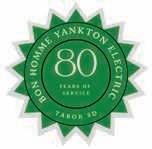
Thank you for all photos submitted for our 2025 calendar. The winner of the $20 bill credit is, Carol Romkema!
Cooking and heating are the leading causes of home fires and fire injuries, and winter months are the peak time for fire-related deaths.
The good news: Deaths from home fires in the U.S. have trended downward since the 1970s, according to Injury Facts, but even one death from a preventable fire is too many. While fire doesn’t discriminate by age, it is the third leading cause of death for children 1 to 14.
When cooking, make fire safety a priority by keeping these tips in mind:
• Be alert; if you are sleepy or have consumed alcohol, don’t use the oven or stovetop
• Stay in the kitchen while you are frying, grilling, boiling or broiling food
• When simmering, baking or roasting, check the food regularly, remain in the kitchen while cooking and use a timer
• Keep anything that can catch fire away from your stovetop Heating is the second leading cause of home fires. Follow these tips:
• Keep all flammables, like paper, clothing, bedding, drapes or rugs, at least three feet from a space heater, stove or fireplace
• Never leave portable heaters and fireplaces unattended; turn off heaters and make sure fireplace embers are extinguished before leaving the room
• If you must use a space heater, place it on a level, nonflammable surface, like ceramic tile, not on a rug or carpet
• Keep children and pets away from space heaters
• When buying a space heater, look for models that shut off automatically if the heater falls over Other top causes of fire include smoking, electrical problems and candles. To minimize risks:
• Institute a “no smoking” policy in the house
• Check all cords and replace any that are frayed or have bare wires
• Switch to flameless candles
• Keep matches and lighters high and out of children’s reach in a locked cabinet
Working Smoke Alarms Are a Must Replacing the Battery on a Smoke AlarmAbout three out of five fire deaths happen in homes without working smoke alarms. Smoke alarms are a key part of a home fire escape plan providing early warning to reduce your risk of dying in a fire. The National Fire Protection Association recommends you:
• Install smoke alarms on every level of your home, inside bedrooms and outside sleeping areas on the ceiling or high on the wall
• Keep smoke alarms away from the kitchen, at least 10 feet from the stove, to reduce false alarms
• Use special alarms with strobe lights and bed shakers for people who are hard of hearing or deaf
• Test smoke alarms monthly
• Replace batteries in your smoke alarm and carbon monoxide detector annually
• Replace smoke alarms that are 10 or more years old
Source: National Safety Council
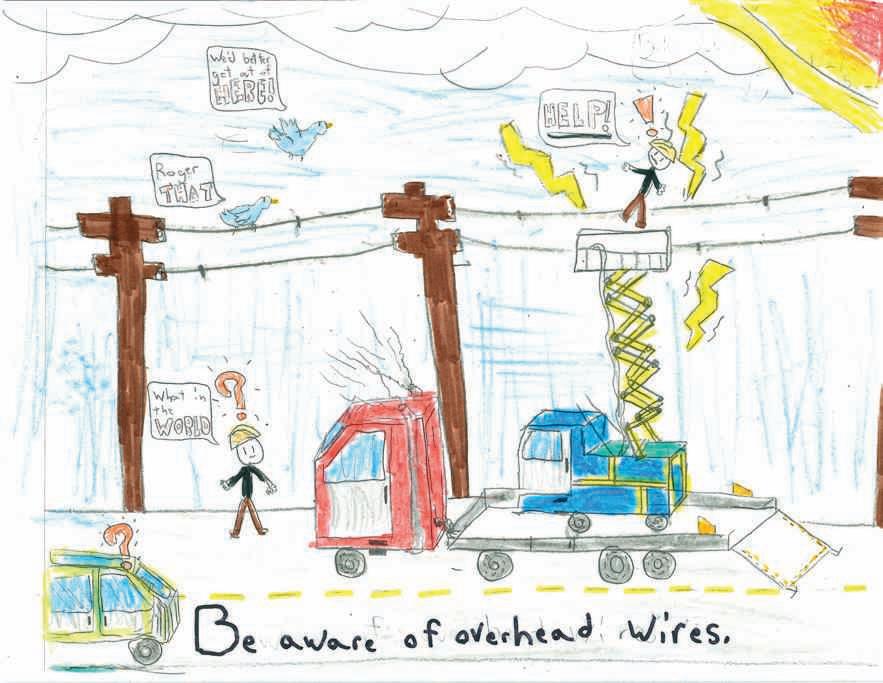
“Be aware of overhead wires.”
Vance Claeys cautions readers to be careful when working around power lines. Thank you for your picture, Vance! Vance’s parents are Jake and Bridget Claeys, members of Lyon-Lincoln Electric.
Kids, send your drawing with an electrical safety tip to your local electric cooperative (address found on Page 3). If your poster is published, you’ll receive a prize. All entries must include your name, age, mailing address and the names of your parents. Colored drawings are encouraged.
Ingredients:
Bring 1/2 gallon water to a slow boil.

BROCCOLI CHEESE SOUP
Ingredients:
1 large pkg. frozen broccoli
1/4 cup water
3 tbsps. margarine
10 oz. package corn
1/4 cup chopped carrots
1/4 cup chopped onion
1/4 tsp. pepper
Cook the above and add
3 cans cream of potato soup
3 cups milk
2 cups shredded Cheddar cheese
1/2 cup shredded Monterey
Jack cheese
Stir until melted
LaVonne Schmidt Sioux Falls, S.D.
Add 1 pkg. of sweetened dried cherries, banana chips, apricots, prunes, 2 apples (all cut into pieces) (Optional to use any dried fruit you wish)
1/2 cup golden raisins
1/2 cup regular raisins
2 whole cloves
2 cinnamon sticks
1 cup sugar (you can use Splenda)
Method
Boil slowly for one hour add 3 tbsps. tapioca and a large pkg. of cherry jello.
Refrigerate and serve with whip cream.
Kari Reder Warner, S.D.
CABBAGE SOUP
Ingredients:
1-2 tbsps. vegetable oil
1 pkg. (14 oz.) smoked sausage, sliced 1/4 in. thick
1 large yellow onion, chopped
1 tbsp. tomato paste
1 small green cabbage, cored and shredded (about 8 cups)
1 medium carrot, finely chopped
1 can (14 1/2 oz.) petite diced tomatoes
1 1/2 tsps. salt
1/2 tsp. garlic powder
1/2 tsp. ground black pepper
1/4 tsp. onion powder
1/8 tsp. crushed red pepper
4 cups chicken stock or broth
1 can (15 1/2 oz.) white beans, drained and rinsed
1 tbsp. white wine vinegar
Method
Heat oil and cook sausage, until browned. Remove from skillet. Add onion and tomato paste; cook and stir until onions are slightly softened and tomato paste has darkened. Add cabbage and carrots to stockpot. Cook, stirring frequently, about 30 minutes or until cabbage has softened and begins to caramelize. Stir in tomatoes, salt and spices. Cook 10 minutes longer or until cabbage is very soft.Return sausage to pot. Stir in stock and beans. Bring to boil. Reduce heat and simmer 10 minutes. Stir in vinegar. Serve hot, sprinkled with freshly grated Parmesan cheese, if desired.
McCormick.com
Please send your favorite recipes to your local electric cooperative (address found on Page 3). Each recipe printed will be entered into a drawing for a prize in December 2025. All entries must include your name, mailing address, phone number and cooperative name.

Employees from East River Electric, Clay-Union Electric, B-Y Electric, Union County Electric and Southeastern Electric attended the 2025 Dakota Farm Show. Employees were available to discuss and answer any questions on various cooperative topics including EV’s, generators (selling, installs and maintenance), electric efficiency, water heaters and

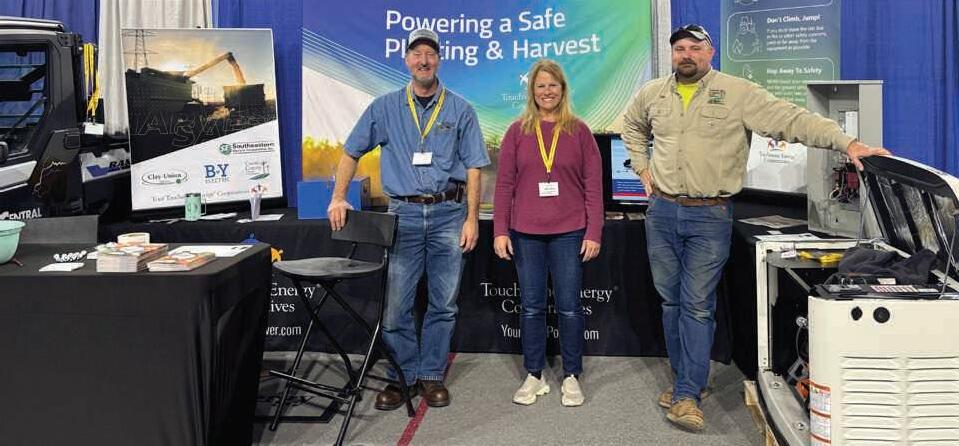
Member Service Representatives from Southeastern Electric, East River Electric and Union County Electric.
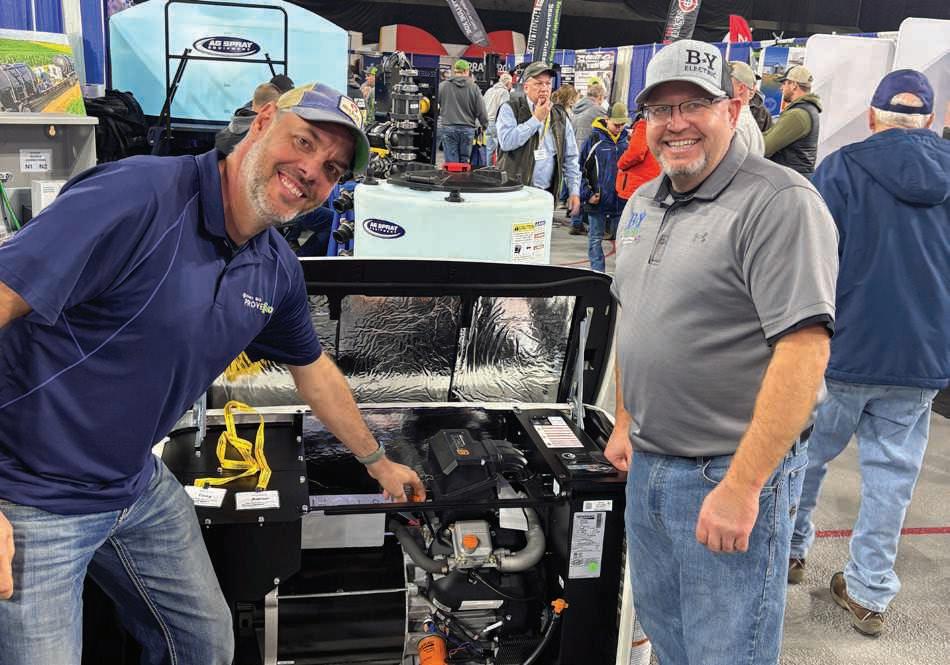

The Operation Round-Up® program is intended to benefit people and organizations within the B-Y Electric service area. The funds may be used for community projects, economic development, education and youth programs, environmental projects, emergency energy assistance, and disaster relief. In December General Manager Stephanie Horst and Committee member Renee Hejna present funds to Nick and Katie Stutzman for an application to Town and Country Swim Pool in Tabor, SD. The funds will be used for a new robot pool cleaner, a bulletin board and other updates.
This institution is an equal opportunity provider and employer. If you wish to file a Civil Rights program complaint of discrimination, complete the USDA Program Discrimination Complaint Form, found online at http://www.ascr.usda.gov/complaint_filing_cust. html, or at any USDA office, or call (866) 632-9992 to request the form. You may also write a letter containing all of the information requested in the form. Send your completed complaint form or letter to us by mail at U.S. Department of Agriculture, Director, Office of Adjudication, 1400 independence Avenue, S.W., Washington, D.C. 20250-9410, by fax (202) 690-7442 or email at program.intake@ usda.gov.
Nominations are now open for “Who Powers You,” a contest being hosted by Bon Homme Yankton Electric Cooperative and the region’s other Touchstone Energy® Cooperatives. The fourth annual Who Powers You contest seeks to highlight local figures who are making a difference in their communities.
“No one succeeds alone, and that is especially true in rural areas, where friends and neighbors in tight-knit communities support, encourage and inspire each other,” said Bon Homme Yankton Electric Cooperative General Manager Stephanie Horst. “Those people don’t do it for the recognition, but they deserve to be recognized, and we’d like to help make that happen.”
Member-owners, employees, and residents who live or work within the service territory of the region’s Touchstone Energy Cooperatives are eligible to be nominated. Nominations will be accepted February 3 through April 11, 2025. Three final winners will be selected by a panel of judges based on the impact that they have on the community. Weekly finalists will be announced and featured on Keloland Living starting March 13, 2025, and the three contest winners will be announced on Keloland Living on May 22, 2025.
The Who Powers You contest grand prize winner will receive a $3,000 prize. A second place winner will receive $1,500 and the contest’s third place winner will receive $500.
“As an electric cooperative, our services extend beyond delivering safe, affordable and reliable power to our member-owners,” said Bon Homme Yankton Electric Cooperative General Manager Stephanie Horst. “The Who Powers You contest highlights the commitment of our co-op to the communities and memberowners that we serve. We know that our co-op community is filled with people making a difference. Let’s celebrate them!”
To learn more about the Who Powers You contest and to nominate someone in your community, visit WhoPowersYouContest.com.
Contest finalists could win one of the following cash prizes:
Grand Prize Winner: $3,000
Second Place: $1,500
Third Place: $500




We know our co-op community is filled with people making a difference. Let’s celebrate them!
Nominate a hero in your community who goes above and beyond.
They could win up to $3,000!
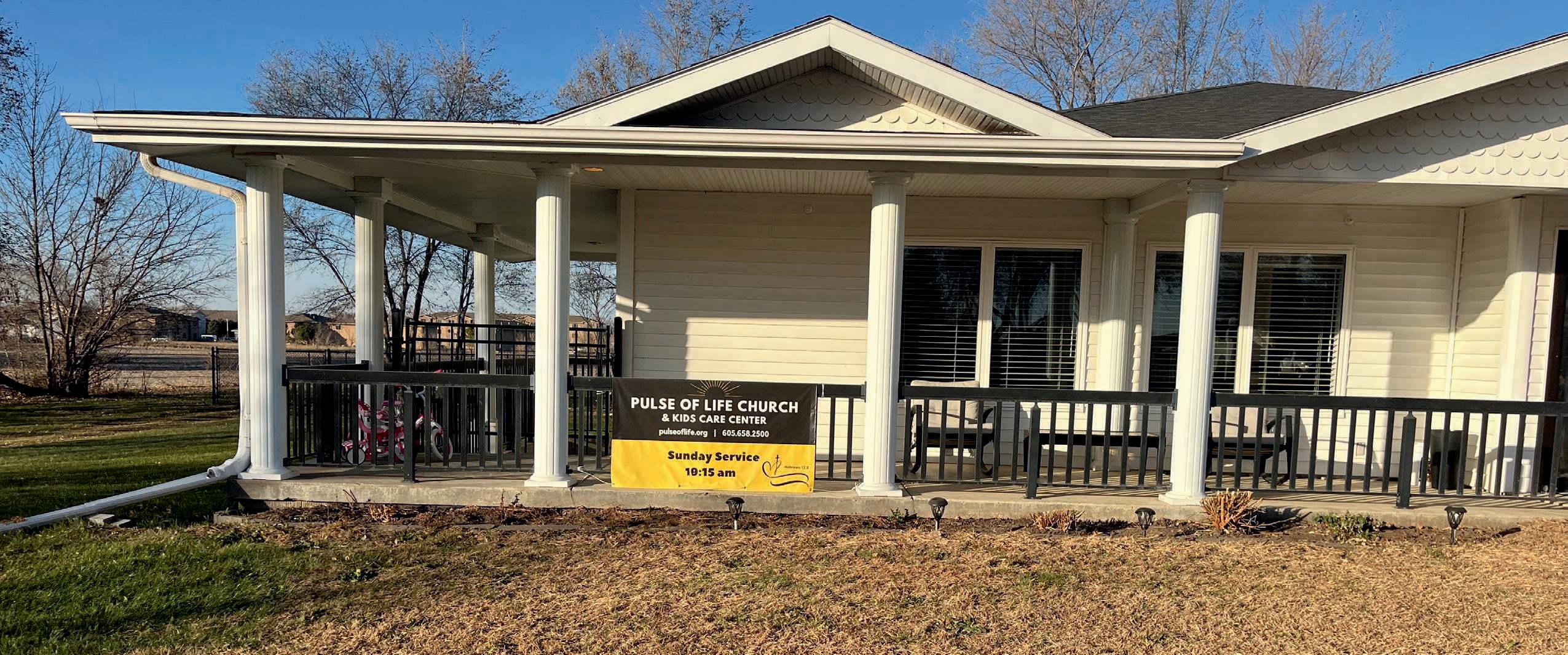
Jacob Boyko jacob.boyko@sdrea.coop
Small towns and rural communities are the backbone of electric cooperatives, with many co-op members relying on their small towns for shopping, childcare, entertainment and other basic needs and services.
That’s why co-ops are working to help keep – and expand – services and job opportunities in small towns using the co-ops’ Rural Electric Economic Development Fund, or REED.
REED is a non-profit organization launched by the electric cooperatives in 1996 to finance community-focused projects across small towns in South Dakota and Western Minnesota where affordable financing can be harder to secure.
REED has multiple sources of funding, but one of the main sources of funding over the years has been the United States Department of Agriculture. REED has utilized both the Rural Economic Development Loan and Grant Program (REDLG) and the Intermediary Relending Program (IRP), which together have amounted to more than $30 million. Through the REDLG program, REED
can fund eligible projects at a 0% interest rate. Through the IRP program, REED applies for low-interest loans and then re-lends the money at a rate slightly higher than the USDA rate – but still less than traditional lending sources. This adds money to the fund and perpetuates it for future projects.
Since the fund’s inception, it’s been used to support more than 400 communityfocused projects.
East River Electric Business Development Director Mike Jaspers says it’s in co-ops’ best interests to make rural living just as feasible as living in a larger city.
“It comes back to our principle of commitment to community,” Jaspers explained. “REED ensures our membership has their vital needs met, and they can enjoy the amenities of life in a rural setting when they’d otherwise have to go to a larger city to access some of those services.”
Eric Fosheim, East River Electric’s economic development director in charge of the REED fund, said the $130 million lent by REED has impacted more than 10,000 jobs and amounted to over $1 billion of economic impact throughout
South Dakota and Western Minnesota.
“Our $1 million investments help spur $10 million projects, which means for every $1 REED invests into a project, it roughly has a $9 or $10 impact,” he explained.
As a supplemental lender, REED won’t finance a project alone; organizations still must secure funding from other sources. However, REED’s low interest rates and community focus can be just what a project needs to catalyze it over the finish line.
As members of the REED fund, co-ops can impact economic development projects while letting REED take on the financial risk.
“The co-ops aren’t on the hook and aren’t guaranteeing the loans here,” Fosheim explained. “REED is doing that.”
Pulse of Life Kids Center –Vermillion, S.D.
Pastors Glenn and Angela Pulse had a vision and a calling. Pulse of Life Foursquare Church, which they hoped to start on Vermillion’s Main Street inside an old medical clinic, had the ability to serve a greater need in the community, where the wait lists for childcare sometimes exceeded three months. They had the faith — they just needed some resources.
The church council worked with First Bank & Trust to secure a loan to create the Pulse of Life Kids Center, but the bank couldn’t lend them the entire amount they needed.
“New daycare centers have a high rate
of failure, so we couldn’t qualify for all of the money that we needed through bank loans,” Angela explained. “Instead of saying no, the bank manager suggested we go about it in a different way. That’s how the conversation about the REED fund came up.”
Clay-Union Electric Manager Chris Larson said supporting the Pulses, who are members of the co-op, made sense for Vermillion, where challenges from workforce shortages and the lack of childcare options are prevalent.
“It fills a need in our community,” Larson said.
Fosheim agrees.
“Workforce challenges have really been an issue in recent years and one way we try to help with that is by investing in daycares,” he said. “Daycares don’t always look that good on paper from a financial standpoint, so a lot of these organizations have a hard time getting adequate financing.”
With the REED fund’s $245,000 loan, the Pulses’ vision finally took shape and the Kids Center opened in 2023. Today, the center offers faith-based daycare with a capacity for 43 of the community’s children.
“It’s encouraging because it puts more options on the table to make these new things possible,” Angela said. “There’s no way we could have done this without the REED fund.”
In Garden City, a small community northwest of Watertown, a dilapidated fire hall sat rotting into its own footprint.
“It was just in a state of disrepair,” said Scott Campbell, treasurer at the Garden City Fire Department. “The walls were pushing out and we had to put plastic over the doors. It was cramped and old. The truck was parked over a basement area, and being heavy and full of water it caused some concern.”
Options were narrowing; Garden City would have to act fast or lose their fire station and rely on surrounding communities during an emergency.
Codington-Clark Electric Director

Russel Foster, who also volunteers for the fire hall, approached his co-op’s manager, Dave Eide, in 2022 about using REED to breathe new life into Garden City’s fire hall.
Eide agreed and helped with the application process, championing the fire hall as a vital need for Garden City, the co-op and co-op members.
“Everybody needs fire protection,” Eide explained.
Through REED, the fire hall secured a $230,000 loan. The new hall features a community room, which Scott said filled a desperate need.
“We had no place to vote, no place for birthday parties,” Campbell said. “Township meetings were in houses at kitchen tables.”
For Eide, the REED fund is just another example of what co-ops are supposed to do – serve communities.
“It’s an extension of what co-ops are in the first place,” he said. “We sell power to members and that’s one way we help and serve our communities. The REED fund is just another extension of that.”
Care – Philip, S.D.
In rural Philip, limited options for elder care had some long-time locals facing tough decisions.
“Our nursing home for a lot of years was not big enough,” said Cindy Pfeifle, business manager at Philip Health Services. “Members of our community were having to leave the area when they needed nursing home care.”
After applying for a REED loan in 2022 through West Central Electric and securing funding from other community sources, Philip Health Systems renovated and expanded the nursing home, increasing occupancy from 30 beds to 42 beds.
West Central Electric CEO Jeff Birkeland said access to the REED fund is essential for rural areas without much population growth.
“We need to keep our people from moving away and keep our businesses local,” Birkeland said. “The best way to do that is by giving them access to very low-interest financing. Saving hundreds of thousands of dollars in interest costs makes projects much more feasible.”
Pfeifle says the community support was essential to initiate the project and applauds REED for helping bring opportunities back to small towns.
“It sends a message of support and cooperation and that they understand how important it is to keep services in rural areas for people who live here,” Pfeifle said.
The nursing home project was the first in West Central Electric’s territory to use the REED fund, but Birkeland hopes many more projects are to come.
“We are a cooperative, so job number one is to take care of our members and do everything we can to help our communities,” Birkeland continued. “If somebody comes to you or you see a need in our communities, we’re all in.”
B-Y Electric is now taking applications for one $1,000 and two $500 academic scholarships for the 2025-2026 school year.
The $1,000 Basin Electric Power Cooperative Scholarship is in its 34th consecutive year and is funded by Basin Electric Power Cooperative of Bismarck, ND.
B-Y Electric is offering the two additional $500 scholarships. These scholarships are designed to recognize and encourage the academic and community achievements of the students in our area.
Applicants must be a dependent of an active electric member and must be students enrolled or planning to enroll in a fulltime undergraduate or graduate course of study at an accredited, two-year or four-year college, university or vocational-technical school.

Scholarship recipients will be chosen on a combination of SAT/ACT scores, overall grade point average, work experience, participation in school and community activities, a personal statement of career goals, a written recommendation letter, and an essay relating to cooperative business.
For more information and for a scholarship application form, contact Bon Homme Yankton Electric, your school’s guidance counselor, or visit our website: www.byelectric.coop/scholarships. Applications must be returned to Bon Homme Yankton Electric, PO Box 158, Tabor, SD 57063 by 4:00pm on Friday, February 14, 2025. Winners will be announced in March 2025.
South Dakota Rural Electric Youth Excursion will be July 21-24, 2025. All high school students whose parents/guardians are members of Bon Homme Yankton Electric are eligible to apply for this all-expense-paid excursion!
• Visit North Dakota’s Capitol!
• Learn where South Dakota’s electricity comes from!
• Tour the Great Plains Synfuels Plant, Freedom Coal Mine and Antelope Valley Station Power Plant!
• Meet new friends!

Application Deadline: Friday, May 9th 2025
For More Information Contact: Bon Homme Yankton Electric Aaron Melichar email: amelichar@byelectric.com or Phone: 605-463-2507
Applications are available on B-Y Electric’s website, your schools guidance offices or call B-Y Electric office at 605-463-2507.
Scott Flood
Last month, we examined the dramatic increases in demand for electric power and noted that America’s peak demand is forecast to grow by 38 gigawatts through 2029 – the equivalent of adding another California-sized state to the nation’s power grid. At the same time, power producers plan to retire more than 110 gigawatts of baseload, or always-available, generation by 2033.
When demand outpaces supply of any commodity – corn, gasoline and electricity – prices tend to increase. In addition, there’s increasing concern about the potential for rolling brownouts and blackouts as power providers struggle to meet peak demands.
Local co-op members may not notice the impact of the supply/ demand imbalance for some time, but it’s captured the attention of electric co-op directors and their staffs.
“The leadership at many electric co-ops is seeing unprecedented growth in demand,” explains Stephanie Crawford, NRECA regulatory affairs director. A decade ago, a huge commercial project might boost a co-op’s total load by 20 or 30 megawatts. “Now they’re getting multiple requests for projects in the hundreds of megawatts,” she adds.
Artificial intelligence (AI) and cloud computing are key drivers of this added demand. As use of AI skyrockets and a greater share of computer applications and storage migrate to the cloud, all that data needs to be stored somewhere. Data centers, which are massive groups of high-capacity computer servers, provide the most efficient way to handle it.
According to the U.S. Energy Department, data centers can consume as much as 50 times the energy per floor space of other types of commercial buildings. A single large data center may use over 100 megawatts of power, enough to power 80,000 households. Data centers already account for nearly 2% of the nation’s electricity use, and the Electric Power Research Institute predicts that will grow to 9% by 2030.
“It’s not only a question of needing to build or obtain more capacity, but in many cases, also creates questions about the availability of transmission and distribution,” Crawford notes. For electric co-ops, the efforts fall into two categories: increasing knowledge and building relationships. A generation ago, power supply discussions were a fairly straightforward and easily understood process for co-op directors, given the widespread
availability of baseload generation. Today’s directors increasingly find themselves learning about sophisticated and challenging issues as they weigh decisions affecting their co-op’s operations and financial viability for years to come.
Co-ops have long emphasized relationship-building, and Crawford stresses the importance of doing that with the companies developing large projects such as data centers.
“Early and frequent conversations between the co-op and the entities seeking additional energy are critical,” she explains. “That has to include honest conversations about the costs and timelines involved.” For example, while a data center project might ultimately need a significant supply of megawatts, if its operations are phased in gradually over several years, the co-op may have additional time to prepare for the maximum load. They might consider creating a partnership with the project owner to develop new generation assets on the project’s site, reducing transmission concerns.
The large tech companies involved in deploying data centers and similar projects are highly sophisticated and well-resourced. They tend to be less interested in obtaining the lowest cost and more focused on reliability, Crawford explains. “What we’re hearing from co-ops is that the companies building data centers typically have done their homework before they start talking to co-ops. Many are anxious to develop their projects at a faster pace than the co-op may be accustomed to.”
While the developers may be ready to pay for the substantial infrastructure upgrades needed to serve their data centers, she notes that the conversations may end up focusing more on project timelines and data center obligations to remain as co-op member-consumers. In addition to supply chain issues related to transformers and other components that are in increasingly short supply, projects may face regulatory delays at all levels.
In addition to preparing for projects from organizations new to the co-op, Crawford notes the importance of co-op leaders keeping a finger on the pulse of their existing commercial accounts. “Being proactive and reaching out to understand how a commercial account’s energy needs may be changing in the coming years will inform conversations and decisions about timing, rate design and other factors, even if they’re not making specific requests yet. That will help the co-op serve emerging needs while protecting the reliability for all of its members.”


Frank Turner frank.turner@sdrea.coop
Farming has always been a way of life for fourth-generation producers Matt Waxdahl and his brother, Ben. Growing up just outside of Flandreau, the brothers spent their childhood lending a hand on their grandfather’s and father’s farms.
Over time, Matt and Ben started their own operation. As the market evolved, so did the brothers. In 2009, they expanded into hog farming, building their first barn. Their success led to the addition of two more barns, the most recent constructed in 2022.
According to Matt, raising hogs comes with one major benefit: temperature-controlled barns.
“It’s all under one roof, and it doesn’t matter if it’s 100 degrees outside or -20, it’s always T-shirt weather,” said Matt.
However, keeping their hogs on a permanent tropical vacation requires a significant amount of energy. During the summers, industrial fans and a stout ventilation system keep the barn cool, while powerful heaters maintain a comfortable environment in the biting South Dakota winters.
Two years ago, the brothers tackled this energy-intensive challenge by installing a 30-kW solar array. With guidance from Sioux Valley Energy, their local electric cooperative, they determined the project would financially benefit their operation due to availability of tax credits and grant funding.
“We saw that the majority of our power usage was always during the day,” Matt explained. “We did some number crunching, and it penciled out.”
The Waxdahl brothers’ decision to invest in a solar array reflects how farmers and ranchers across the state are utilizing Distributed Energy Resources (DERs) like solar panels and on-site wind turbines. While some producers use solar panels to power remote water pumps, others invest in larger systems like solar arrays to offset the energy demands of their farms.
According to Ben Pierson, energy services manager at East River Electric, DERs are not common across the state. However, Pierson noted there are situations where DERs make sense: in remote areas where connecting to the electrical grid is too costly, for businesses or individuals looking to leverage tax credits and grant funds, and
for individuals who want to produce their own energy as a personal or environmental choice.
“The most successful applications of DERs that I’ve seen have been for agricultural operations like hog and dairy farms, where the producer has been able to secure both grant funding and tax incentives,” said Pierson. “It makes sense economically because they are using most their energy during the day when solar is producing.”
Even in the best-case scenarios, DERs still face challenges. Without existing tax breaks and grant funds, the energy savings from Waxdahls’ solar array would not have justified the expense. “It wouldn’t be economically efficient at all without the tax credits and grant funding,” Matt said.
The array has also not been as efficient as the Waxdahls had hoped. While the panel installers projected a return on investment within seven to 10 years, the reality after two years of operation suggests it may take closer to 12 to 15 years for the panels to pay for themselves.
Despite the challenges, Matt considers his solar array a successful addition to his hog operation. “If I had another barn the same size, I would make the same decision to add a solar array,” he said.
While DERs offer renewable energy options at the local level, South Dakota’s electrical grid already incorporates significant contributions from renewable energy sources at a wholesale price.
In fact, Basin Electric Power Cooperative, a generation and transmission cooperative serving South Dakota’s electric cooperatives, began purchasing energy from the Wild Springs Solar Project in 2024. Located near New Underwood, the 128-megawatt facility is the largest solar farm in the state. Basin Electric is set to purchase 114 megawatts of the project’s output, marking its first step into utilityscale solar generation.
The benefits of this project are already underway, said Pierson.
“Building a large-scale solar array is much more economically feasible than
a smaller-scale solar array,” said Pierson. “It lets us implement renewable energy into the portfolio in a cost-effective way.”
According to Pierson, power providers are continually working to implement renewable energy where it makes sense while providing reliable energy at an affordable price.
When considering the addition of DERs such as solar panels or an on-site wind turbine, Pierson encouraged members to contact their local electric cooperative to ensure the system is properly sized and safely connected.
When implementing a DER, there are often safety requirements in place to protect both the DER owner and the grid operators.
“Especially if you are talking to a third-party vendor, please reach out to your local utility to discuss the pros and cons – and realities – of implementing DERs,” said Pierson. “Utilities can offer unbiased information regarding the expected output and proper sizing of a DER.”

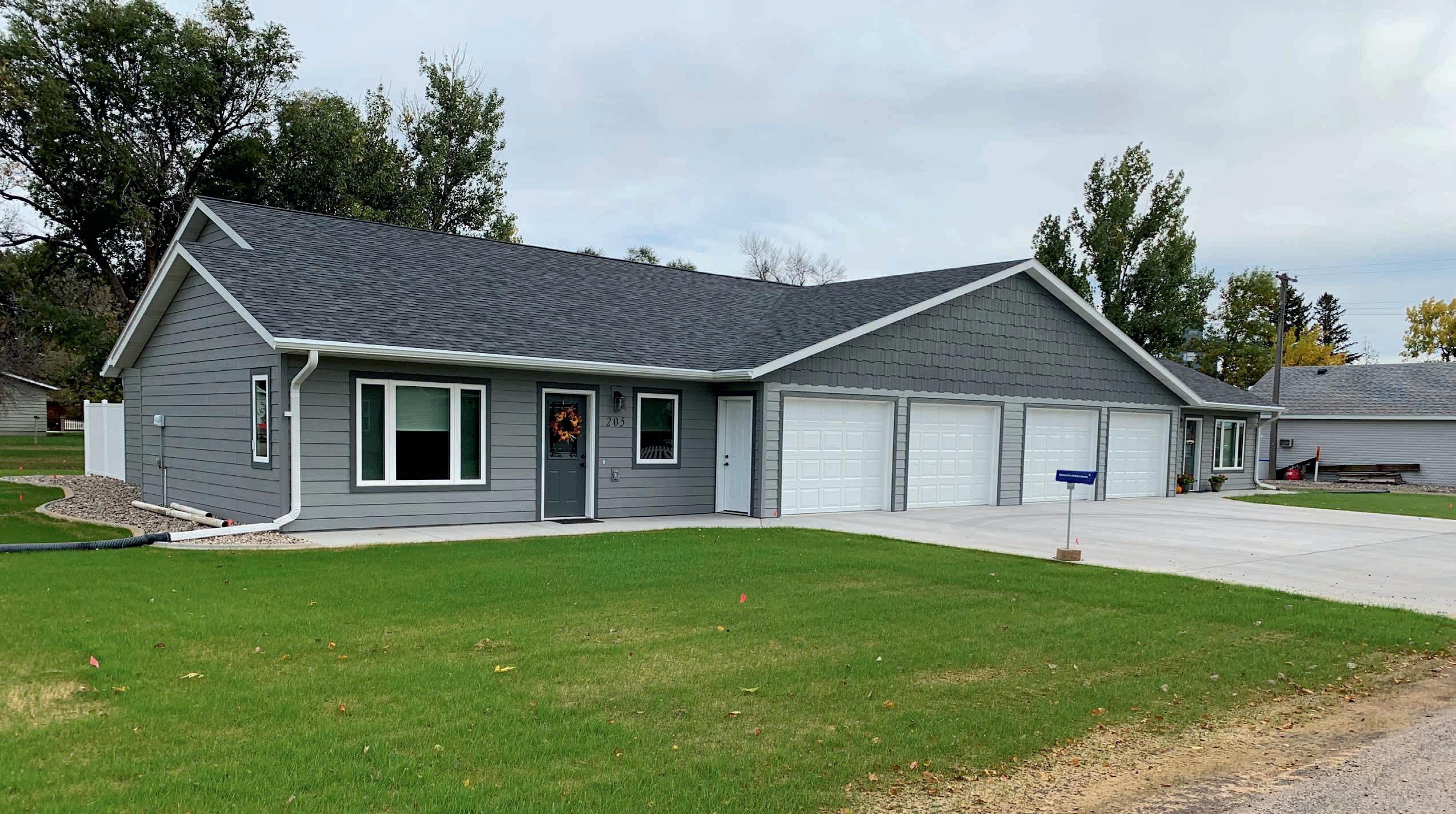
Jocelyn Johnson jocelyn.johnson@sdrea.coop
Supply and demand for workforce housing in South Dakota remains an issue for many smaller communities. Wage and worker demand has outpaced what many rural communities offer in affordable housing supply. Attracting and retaining qualified workers is becoming more of a challenge due to the simple, albeit costly, prerequisite for a place to live.
The need to develop and provide workforce housing at reasonable rates is a trending topic that one community advocate in Herreid, S.D., quickly acted on – resulting in a population increase for the first time since the town’s 1960 census.
Dick Werner, member of Cam Wal Electric and Black Hills Electric, has long championed the development of rural towns as a business owner, economic development consultant,
former state legislator and former county commissioner. He saw a need in his hometown for workforce housing, which he attributed to the dwindling population.
“When we first started tracking our population, we found that the highest number in our population fell into the category of 65 and older,” Werner said, “Next was the workforce group. Our lowest was our youth, which directly correlated with our depleting school enrollment.”
In 2016, Werner and other community leaders found the Herreid Area Housing Development (HAHD), a nonprofit committed to improving the town’s housing stock and ensuring long-term growth. Using this, the group worked quickly – gaining funds to build a place where workforce families would want to live
“It’s been one of the most rewarding challenges you can deal with,” Werner
said. “If you don’t control the dirt, you don’t control the future.”
Werner attributes his community’s growth to working families moving and staying in Herreid as well as welcoming diversity into the community’s workforce.
“It’s not just building homes, but it’s knowing what you have in your community,” Werner said. “We not only needed places for families to live, but we also needed to welcome diversity and make our community family friendly.”
Public facilities were similarly given attention to promote community growth. Playgrounds, sports facilities and the city pool were updated through a combined effort of donations, loans and grants.
Since 2017, five speculative homes have attracted 25 new residents to Herreid. The HAHD also purchased a remodeled eightplex apartment, a fourplex built in 2009, and two new twin homes – all full with a waiting list.
“That’s where we worked with the South Dakota Housing Opportunity Fund,” Werner said. “It gave us half the money to build and it’s forgivable after 20 years.”
South Dakota Housing is a selfsupporting, nonprofit entity that
provides financing solutions such as housing bonds, tax credits and other federal and state resources to fund housing programs. This funding provides housing construction and rehabilitation, rental assistance, educational opportunities and more. One program offered is the South Dakota Housing Opportunity Fund.
Amy Eldridge, Rental Housing Development Director for South Dakota Housing, highlighted the financial virtues of the program.
“Local economic development groups and any property developer may apply for the funding,” said Eldridge. “It’s about the attractive financing that the program offers at 0% interest. With today’s interest rates, it’s hard to develop a property if you have to pay 7% interest while trying to construct it.”
Working with $3 million annually, the South Dakota Housing Opportunity Fund has a competitive application process. New construction as well as building acquisition and rehabilitation qualify.
South Dakota Housing also offers infrastructure funding through the Housing Infrastructure Financing Program. John Curry and partner Chris Dunham of Elk Point Investments were recent recipients of these funds. They are currently developing land in Elk Point, S.D., where more than 150
(Below) The pool project included a new bath house, new step-in pool with water features and existing main pool enhancements. The total project cost was $1,132,000, with HAHD raising $800,000 through grants and fund raising activities.
homes have been built over the past 27 years.
“We’re the land developers, so we do the dirt work and civil engineering, and we sell to home builders,” said Curry. “The South Dakota Infrastructure Fund was something I had read about…We were in a good position to apply, and it provided 1/3 of the development costs if you met the criteria. With this funding, we are targeting to sell 56 lots beginning the spring of 2025.”
South Dakota Housing was allocated $200 million by the state in 2023 to provide loans and grants for the development of housing infrastructure through the Housing Infrastructure Financing Program. Any for-profit or non-profit entity, tribal government, housing authority, political subdivision or agency of South Dakota is eligible to apply for funding.
“There is a shortage for housing,” said Curry. “I think you’re going to see a nice boom in workforce housing throughout the state because of this funding.”
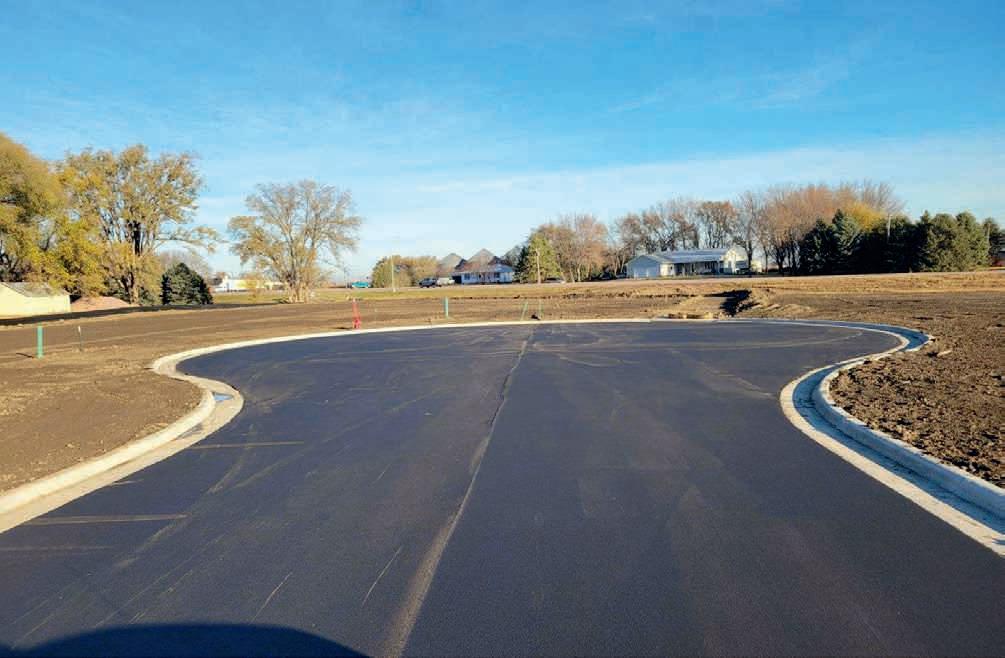

Bring this coupon and mailing label to the Touchstone Energy® Cooperatives booth at Black Hills Stock Show & Rodeo to win a Blackstone electric grill!
Your Phone Number:
Your E-mail Address:

JAN. 31-FEB. 8
Black Hills Stock Show & Rodeo
Rapid City, SD
605-355-3861
BlackHillsStockShow.com
To have your event listed on this page, send complete information, including date, event, place and contact to your local electric cooperative. Include your name, address and daytime telephone number. Information must be submitted at least eight weeks prior to your event. Please call ahead to confirm date, time and location of event.
FEB. 1
James River Gobblers Wild Turkey Banquet 5 p.m. Highland Conference Center Mitchell, SD 605-999-3208
FEB. 2
Hot Dish Competition Lake County Museum Fundraiser 11 a.m.- 1 p.m.
St. Thomas School Gym Madison, SD 605-256-5308
FEB. 8
ALL Ability Skate Day Disability Awareness & Accessibility Committee 1-3 p.m.
Main Street Square Rapid City, SD 605-390-4434
FEB. 14-17
11th Annual Frost Fest 9 a.m.-3 p.m. Brookings, SD 605-692-7444
FEB. 15
Sioux Empire On Tap Sioux Falls Convention Center Tickets available online www.siouxempireontap.com
FEB. 22
Knights of Columbus Ice Fishing Derby Waubay Lake Registration 9-10 a.m. 605-881-5075
FEB. 22
Bellator Titans Charter Casino Night Fundraiser 6-11 p.m. 316 2nd St. Aberdeen, SD
MARCH 8-9
Philip Area Annual Gun Show Sat. 9 a.m.-5 p.m. Sun. 9 a.m.-3 p.m. American Legion Hall Philip, SD 605-859-2135
MARCH 14-15
Badlands Quilter Weekend Getaway Fri. 5 p.m. Sat. 8 a.m. Community Center Wall, SD 605-685-5718
MARCH 15
VFW Teener Baseball Bingo Benefit 5 p.m.
Tyndall Auditorium Tyndall, SD
APRIL 4-5
Annual Schmeckfest German Heritage Celebration 748 S Main St Freeman, SD 605-925-4237
APRIL 11-12
Junkin’ Market Days Spring Market Fri. 4-7 p.m. Sat. 9 a.m.-4 p.m. $5 Admission
W.H. Lyon Fairgrounds Sioux Falls, SD www.junkinmarketdays.com
JUNE 20-21
Czech Days
Fun, Music, Entertainment, Dancing & Czech Food Tabor, SD taborczechdays@gmail.com www.taborczechdays.com Facebook.com/TaborCzechDays
Note: Please make sure to call ahead to verify the event is still being held.